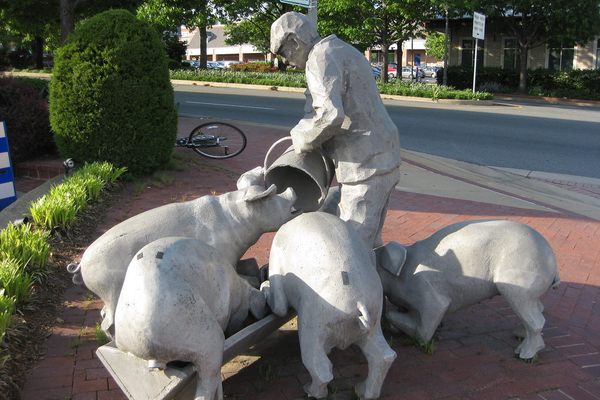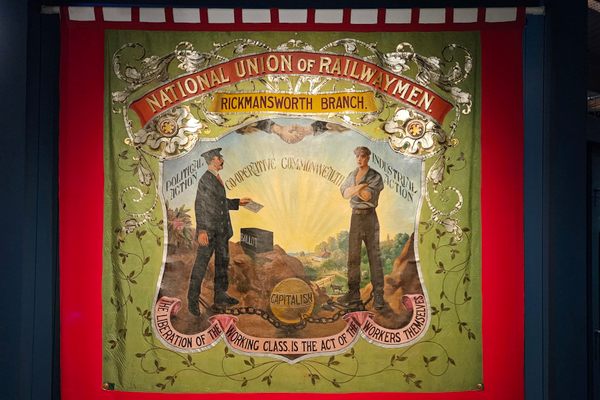AO Edited
Tinner Hill Historic Site
This monument traces the segregation line that inspired the first rural branch of the NAACP.
Stonemason Charles Tinner and his wife Elizabeth developed the community of Tinner Hill in the late 1800s. He created ten lots on what had previously been a tobacco plantation and bequeathed one to each of his children.
In 1915, one of Tinner’s sons, Joseph, joined forces with Dr. E.B. Henderson and other neighbors to form the Colored Citizens Protective League to protest a segregation ordinance— an order that would have forced them out of their homes and into a separate part of town.
The Supreme Court struck down forced housing segregation in the 1917 decision Buchanan v. Warley. The following year, the Colored Citizens Protective League became the first rural branch of the National Association for the Advancement of Colored People in 1918.
Tinner Hill is now a historical park that sits in the spot where the Tinners lived, not far from where some of their descendants still reside today. The park features several historical markers that highlight critical elements of the struggles faced by the Tinners and their neighbors in the fight against segregation.
The centerpiece of the park is the Zig Zag Monument, which follows the original line that was drawn to segregate the community. The monument is the work of local sculptor Martha Jackson Jarvis and it showcases how political leaders created boundaries to dilute the power of Black voters in 1887.
An additional exhibit featuring a stone arch and several plaques affixed to large stones stands in front of the Target Store across South Washington Avenue.
























Follow us on Twitter to get the latest on the world's hidden wonders.
Like us on Facebook to get the latest on the world's hidden wonders.
Follow us on Twitter Like us on Facebook